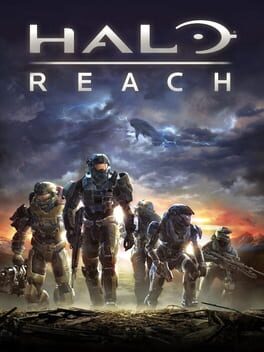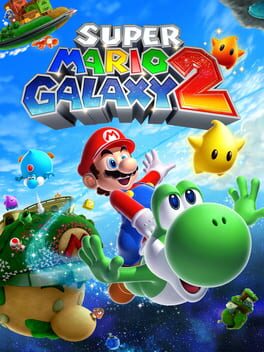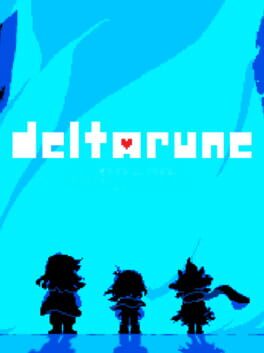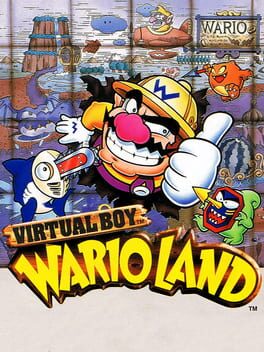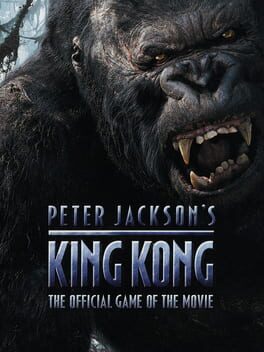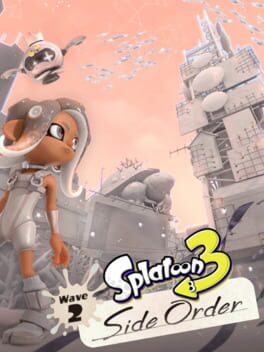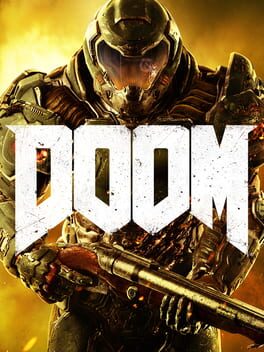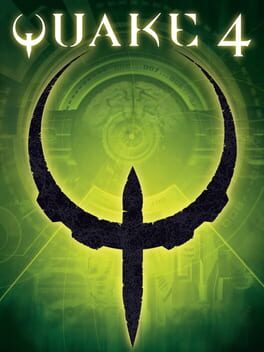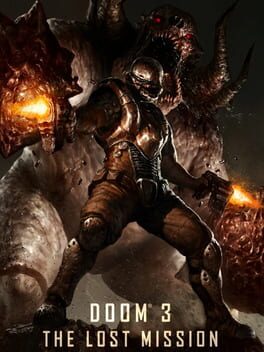Mariofan717
I'm a nerd who likes many video games, especially shooters and platformers.
Badges

Shreked
Found the secret ogre page

Liked
Gained 10+ total review likes

Well Written
Gained 10+ likes on a single review

Listed
Created 10+ public lists

GOTY '23
Participated in the 2023 Game of the Year Event

Pinged
Mentioned by another user

GOTY '22
Participated in the 2022 Game of the Year Event

Elite Gamer
Played 500+ games

Organized
Created a list folder with 5+ lists

Donor
Liked 50+ reviews / lists

On Schedule
Journaled games once a day for a week straight

Popular
Gained 15+ followers

Best Friends
Become mutual friends with at least 3 others

Busy Day
Journaled 5+ games in a single day

3 Years of Service
Being part of the Backloggd community for 3 years

Gamer
Played 250+ games

GOTY '21
Participated in the 2021 Game of the Year Event

Noticed
Gained 3+ followers

GOTY '20
Participated in the 2020 Game of the Year Event

N00b
Played 100+ games
Favorite Games
659
Total Games Played
027
Played in 2024
196
Games Backloggd
Recently Played See More
Recently Reviewed See More
List: https://www.backloggd.com/u/Mariofan717/list/doom--quake-campaigns-ranked/
The marathon starts to come full circle with the game that was unsurprisingly my introduction to the series. Doom 2016 is very funny to me, because it succeeds as a reboot and throwback not by embracing "retro" design tendencies, but by instead discarding most of what contemporary AAA games are lambasted for in favor of focusing on what they're able to do best with a massive team and budget. This game is polished to a mirror sheen, delivering some of the most satisfying combat to ever grace the genre while being nothing short of an audiovisual marvel - although not entirely without being weighed down by decidedly modern design trends.
Classic Doom works as well as it does by seamlessly blending its action and exploration - every moment of gameplay serves to progress you in some way as you familiarize with each maze and make choices based on characteristics of specific weapons in your arsenal and enemies that are placed in ways that give each level a specific identity; the best classic maps are essentially puzzle boxes that lend themselves to organic discovery. 2016, by comparison, is quite starkly segmented into combat arenas and the exploration in between them.
Where Doom 3 chose to emphasize the scares over the shooting, this game leans farther in the opposite direction than the series ever has before within a structural and aesthetic framework that's surprisingly similar. It's hard to imagine that the art direction of this game's realistic Mars facility where nothing but the pickups look out of place and the more fantastical ancient architecture of Hell didn't take cues from its predecessor, which made for a fairly smooth transition when paired with the conspicuous placement of larger encounters. It's in these arenas where the difference comes into play - where Doom 3 encourages you to make every shot count against enemies you can outstep but not outrun, 2016 urges you to RIP AND TEAR unlike any shooter I've played before.
Every game in the series is ultimately about the struggle of optimally dealing and avoiding damage against enemies whose codes you eventually learn to crack, and this entry stays true to that core while fully immersing you in the role of a seemingly immortal force of nature through clever design choices, an arsenal that looks and feels amazing, and a visceral, adrenaline-pumping soundtrack from Mick Gordon. At the heart of it is the Glory Kill systems, epitomizing the two aforementioned pillars of Doom combat by rewarding calculated dealing of damage and careful positioning with extra health and gloriously brutal (sometimes hilarious) execution animations. It's a beautifully realized power fantasy, one that still demands mechanical mastery to exert that power to the fullest.
Such exhilarating action, however, comes at the cost of proportionally understated downtime. This is where 2016 goes from a shining example of what can be accomplished with AAA polish to an example of how even the best games in this space are ultimately beholden to the expectations of modern consumers as exemplified by its large host of upgrades and the checklist nature through which they're acquired. This game has two different mods for each weapon, upgrades for each of those mods followed by a mastery challenge, upgrades for your health, ammo, and shield capacity, and runes which give more specific broadly applicable bonuses. Many of these are tucked away as "secret" collectibles, but the map system turns "discovering" these into a trivial chore that you'll be punished on higher difficulties for ignoring. The Ubisoft brainworms that I've yet to successfully kill compelled me to go for 100% on this replay, and although there was fun to be had with the bite-sized Rune challenges that impose specific restrictions that put your mechanical knowledge to the test, getting all of the collectible upgrades, toys, and text logs was a matter of going through the motions; the mission challenges that I'd neglected to mention until now are no different. This added several hours to what was already one of the longest FPS campaigns I've played, and that's simply too much! This aspect of the game is by no means a grievous misstep, but it's a glaring compromise that clashes with an otherwise super strong creative vision.
As another note on that vision, the storytelling here noticeably takes after Doom 3 as well, which is quite funny given that it has no clear place in the newly revised Doom Slayer saga. There is a narrative here that, unlike the classic games, can't be easily ignored! It's nothing mindblowing and the text logs are bit dry for my liking compared to the often hilarious UAC communications found in its predecessor, but Samuel Hayden is a highly entertaining presence who, as I discovered as I was writing this, is a remnant of Doom 3! While honestly not as much a return to form as it was made out to be, Doom 2016 offers a bold vision for the franchise that could have been nearly perfect here if delivered with a bit more confidence. Even if it doesn't manage to fully escape the creative confines of the industry, it's a staggeringly successful reboot and arguably the single most important shooter of the past decade.
Cross-posted on Twitter: https://twitter.com/mariofan717/status/1767108522385482109
List: https://www.backloggd.com/u/Mariofan717/list/doom--quake-campaigns-ranked/
Doom 3 is known today largely as the black sheep of the series, and its sister series would receive a game in the same engine the following year with a much stronger identity crisis that I imagine was overlooked because of how much Quake's legacy has been defined by deathmatch. Quake 4 is by far the most forgotten main entry in this marathon, remembered today mostly for a single scene that I saw in a WatchMojo countdown a decade ago if it's remembered at all. Because of this, I was genuinely unsure what to expect for once, and what I got is a game that's as much a product of its time as Doom 3 and just as influenced by its peers, this time for worse.
This is a linear military shooter that's as grey and brown as they come, lacking in the grotesque body horror-driven sci-fi aesthetic that makes the Strogg stand out for a substantial portion of the campaign and severely limiting movement speed in the first half without having the mechanical cohesion of Doom 3 to justify it. That last point is especially important, as I'd argue that the preservation of the original game's movement is what allowed Quake 2 to work as a sequel even though it wasn't originally intended as one. What holds Quake 4 together during the first half is its surprisingly excellent gunplay - every weapon here feels fantastic, especially the shotgun and nailgun once they're upgraded. The encounter design isn't particularly varied, but the enemies are always fun to shoot.
Once the infamous Strogg transformation occurs, things pick up significantly. You move as fast as you should have been able to in the first place, fights become tougher to compensate, and environments become more varied and make better use of the engine's atmospheric lighting capabilities. There's a particularly great section in the latter half in which you're faced with the mindless, shambling remains of failed Strogg transformations, easily the most striking bit of horror in the series outside of the one scene everyone already knows about. This huge increase is momentum is unfortunately halted by a final stretch of levels that return to the more repetitive structure of the early game, but aren't without highlights such as a much-appreciated reinterpretation of the Iron Maiden.
Quake 4 is an odd sequel, one that's arguably less faithful to Quake 2 than that entry was to its predecessor. Its rock-solid shooting mechanics are bogged down by the trends of its era more than any other game in this marathon, but if there's one thing I've learned from this experience, it's that good shooting goes a long way in making even the jankiest time capsules palatable to me.
Cross-posted on Twitter: https://twitter.com/mariofan717/status/1760796889761624405
List: https://www.backloggd.com/u/Mariofan717/list/doom--quake-campaigns-ranked/
Quite possible the most curious piece of post-launch official content in this entire marathon; for as much as I personally enjoyed the base game, it's so quintessentially mid-2000s both visually and mechanically that for another episode to have been made for it years down the line feels like an anomaly. Not only that, it's specifically part of a rerelease that strips away the contentious aspects that give the original game its distinct flavor, made evident here by the brighter overall lighting and a greater emphasis on combat than any other slice of Doom 3 content.
The atmosphere and pacing that make the base game and Resurrection of Evil are notably diminished here in favor of getting the super shotgun in your hands quite quickly and letting you go wild with it. Visibility will never be an obstacle, but you'll certainly be faced with more Revenants to shoot in the Mars base than ever before yet another trip to Hell, where the fortress that awaits, although not exactly labyrinthine, evokes the level design of classic Doom more than anything else in Doom 3; there are lots of symmetrical room layouts with little verticality and item placement that makes no attempt to look natural. Even the crusher hallways are here!
In many ways, even if quite a bit less polished, this sequence feels like the precursor to Doom 2016, giving The Lost Mission a more significant place in the series history than just "two extra hours of Doom 3 that doesn't play to its strengths". It's the weakest Doom entry in this marathon, but a fun time nonetheless.
Cross-posted on Twitter: https://twitter.com/mariofan717/status/1759138709965009074
